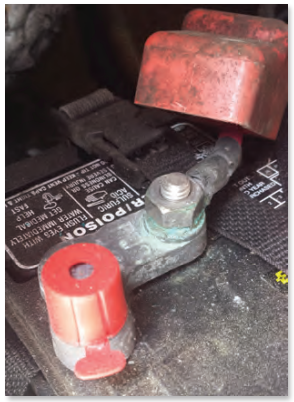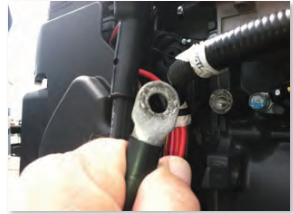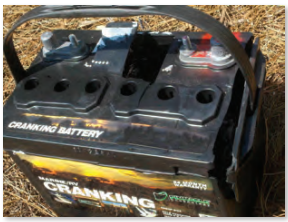The battery is a key component of a modern outboard motor. It provides energy required during starting and
provides supplemental energy when the boat’s demand exceeds the capacity of the charging system. Modern
fuel injected motors can be more sensitive to low voltage conditions than previous carbureted models. Because
of the battery’s importance, battery cables are one of the cornerstones of a properly functioning electrical
system and motor.
Loose or corroded battery cables can cause a variety of intermittent issues from hard starting or stalling to poor
power. Taking a little time to perform a few simple steps will help ensure that the motor will continue to perform
as expected.


Check to ensure that battery terminal connections are clean and secure; corrosion can cause a significant voltage
drop during operation, affecting both the ability of the battery to power the starter motor and also the ability of the
charging system to recharge the battery. Also make sure to inspect the motor side of the cables. These connection
points can be well hidden on a powerhead but are just as vital as the connections at the battery.

When a battery is supplying electrical power, one of the results is hydrogen gas. The more current that the battery
produces, the more hydrogen gas is produced. Hydrogen gas is extremely flammable, so this can create a very dangerous
situation if sparks occur. Consider this scenario: A loose battery terminal was causing a motor to stall just after it had
been started. Starting the motor numerous times while trying to diagnosis the issue caused a large buildup of hydrogen
gas inside this battery. When the technician checked to see if the cable was loose, the cable made contact and created a
spark. This ignited the hydrogen gas and caused the battery to explode. This could have been lethal. Luckily the technician
was not injured.
Always use extreme caution when working with batteries and make sure that all electrical systems are off when
connecting or disconnecting the cables.